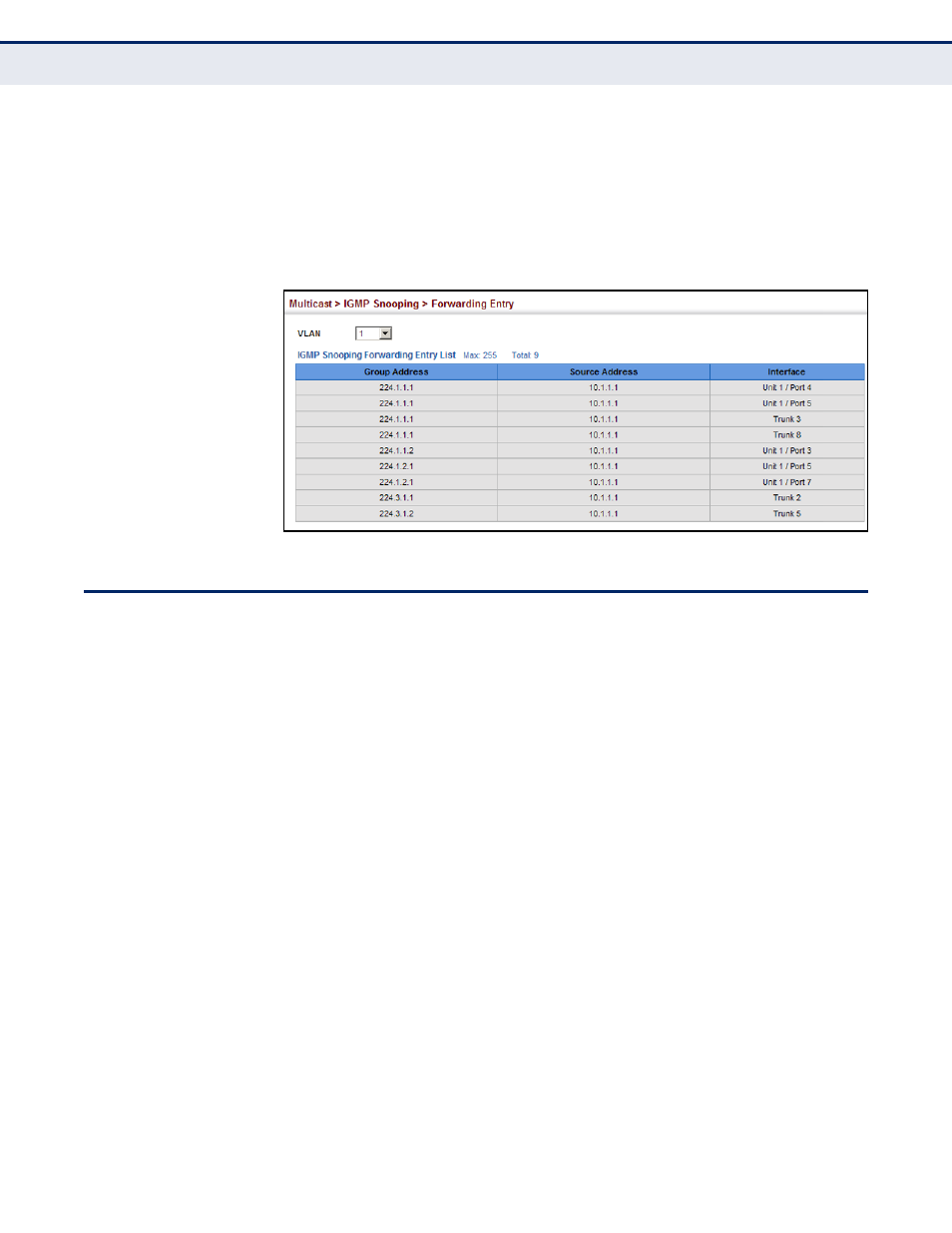Filtering and throttling igmp groups, Filtering and throttling, Igmp g – Microsens MS453490M Management Guide User Manual
Page 458

C
HAPTER
18
| Multicast Filtering
Filtering and Throttling IGMP Groups
– 458 –
W
EB
I
NTERFACE
To show multicast groups learned through IGMP snooping:
1.
Click Multicast, IGMP Snooping, Forwarding Entry.
2.
Select the VLAN for which to display this information.
Figure 278: Showing Multicast Groups Learned by IGMP Snooping
F
ILTERING
AND
T
HROTTLING
IGMP G
ROUPS
In certain switch applications, the administrator may want to control the
multicast services that are available to end users. For example, an IP/TV
service based on a specific subscription plan. The IGMP filtering feature
fulfills this requirement by restricting access to specified multicast services
on a switch port, and IGMP throttling limits the number of simultaneous
multicast groups a port can join.
IGMP filtering enables you to assign a profile to a switch port that specifies
multicast groups that are permitted or denied on the port. An IGMP filter
profile can contain one or more addresses, or a range of multicast
addresses; but only one profile can be assigned to a port. When enabled,
IGMP join reports received on the port are checked against the filter
profile. If a requested multicast group is permitted, the IGMP join report is
forwarded as normal. If a requested multicast group is denied, the IGMP
join report is dropped.
IGMP throttling sets a maximum number of multicast groups that a port
can join at the same time. When the maximum number of groups is
reached on a port, the switch can take one of two actions; either “deny” or
“replace.” If the action is set to deny, any new IGMP join reports will be
dropped. If the action is set to replace, the switch randomly removes an
existing group and replaces it with the new multicast group.